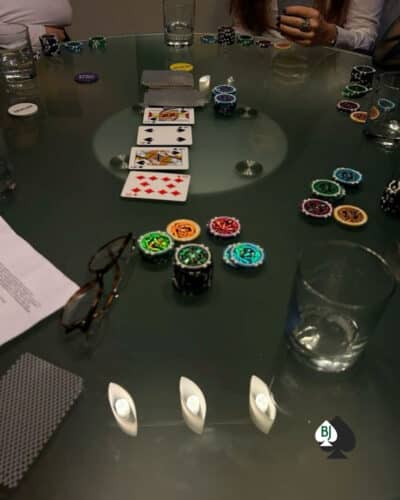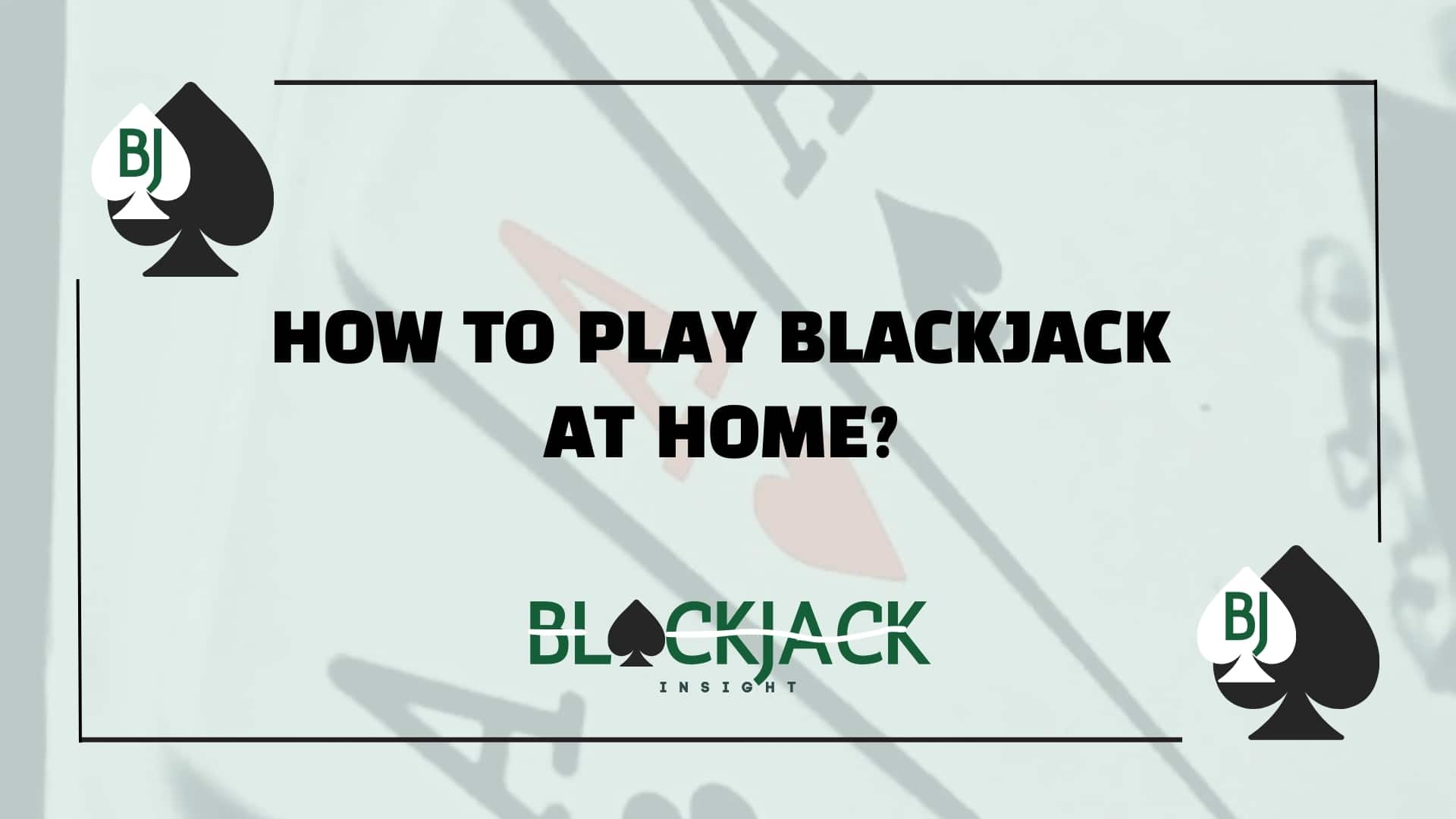How to Play Blackjack at Home?
Table Of Content
Blackjack is one of those rare card games that’s easy to learn, exciting to play, and just the right amount of competitive. But you don’t need to visit a casino to enjoy it. If you’ve ever wondered how to play blackjack at home, I promise you’re not alone. Whether you’re aiming for a casual game night or a friendly money match, setting it up is simpler than people think.
What You Need to Get Started
To start, you will need:
- A single, ordinary deck of cards (two, in case you have a big group of players).
I use one for six, but for big groups, two decks keeps a quick pace. - Some chips or tokens for bets.
As a matter of fact, coins and candy can work, but real chips make for a truer simulation. - A convenient gaming space.
- Any dining room will work. Having a felt or a Blackjack mat is a bonus, but I have seen groups happy to play on living room floors.
Before obtaining the necessary equipment, you may need to know how to play blackjack in general, read this blog, and then continue this one!
How to Play Blackjack at Home Step by Step
Here’s a simple way to structure a game:

- Assign a Dealer—One person acts as the dealer. Rotate this role every few rounds or keep one person in charge if they enjoy it.
- Deal chips— You can use a small buy-in if you’re actually playing for real money
- Shuffle and Deal—Two cards for each player and the dealer (one of the dealer’s cards face up).
- Player Turns—Each player decides whether to hit or stand. If they bust (go over 21), they’re out of the round.
- Dealer’s Turn—Dealer reveals their hidden card, draws until at least 17.
- Determine Winners—Compare hands. Highest hand under or equal to 21 wins. The tie goes to the dealer (house edge, folks).
Want to play blackjack at home with friends and make it feel legit? Use chips, introduce betting rounds, and even set up a basic discard tray to manage used cards.
The ideal group size: 2 to 7
I’ve personally taught groups of anywhere between two friends and a party of eight. Over seven or eight can slow down the game, but it can work out if everyone is patient.
Playing With 2 Players? Here’s How
Wondering how to play blackjack at home with 2 players? It’s not much different, but it does change the energy. One person plays the dealer, and the other plays the hand. Rotate roles after each round to keep it fun and fair.
My buddy and I used to do this on slow Sunday evenings. We’d bet small—like whoever loses has to do dishes. It keeps it playful without turning it into a high-stakes showdown.
Playing Solo: Yes, It’s a Thing
Yep, you can figure out how to play blackjack by yourself at home. It’s great for practicing basic strategy. Deal two hands—one for the “player,” one for the “dealer”—and follow the same rules.
When I was learning to count cards (not that I recommend it in casinos… ahem), I’d play solo rounds to sharpen my instincts. It’s not as thrilling, but it’s a solid way to learn the flow.
Gameplay Hints for Home Plays
You may encounter some problems while playing blackjack at home. Here are solutions for the most common issues.
No Dealer? No Problem.
If you’re curious about how to play blackjack at home without a dealer, you can either:
- Take turns acting as the dealer
- Use an app or computer to simulate a dealer’s behavior
- Play “face-up blackjack,” where all cards are visible, and everyone plays against the dealer’s hand as a group
You don’t need to overthink it. The goal is to enjoy the game, not replicate every inch of a Vegas floor.
Betting at Home: Keep It Friendly
So, how to play blackjack at home with money without things getting weird? Keep stakes low and rules clear. Decide before starting:
- Minimum and maximum bet
- When players can double down or split
- What happens in a tie (house wins? split pot?)
Also, decide if jokers are in or out (they shouldn’t be in blackjack) and what happens if you run out of chips. House rules matter when there’s cash on the table. First, learn the rules here.
Online Versus Offline Options
Blackjack doesn’t have to be purely in-person. Short on space, or can’t gather friends?
- Online Sites and Apps: There are many websites and programs offering free or real-money Blackjack with tables. You can invite friends and have private rooms or challenge strangers worldwide. I have seen students gain confidence in an online environment and then impress everyone at the following week’s home session with newfound skill.
- Offline Computer and Console Games: There are console and computer Blackjack games that simulate the casino atmosphere too. Though they might not have the full social buzz of a live group, they’re still a good way to practice.
Suggestions For a Lively Environment
Create a mood. Dim lights, a little background jazz, or classic Vegas tunes will do. A cozy atmosphere can make the game more relaxed.
Keep snacks and drinks nearby. Blackjack sessions can run long, so having refreshments at hand keeps everyone happy.
Encourage conversation at the table. Much of my best laughter and most memorable experiences during a Blackjack session come from the friendly chatter.
FAQ
1. What if I don’t know how to shuffle and deal?
Don’t worry about having expert dealer skills. An overhand riffle shuffle or even a simple overhand shuffle will do. If you want to look smoother, there are quick online guides.
2. Can I have a good time with two or three players?
Absolutely. With fewer people, the game is quick and everyone sees plenty of action. Some of my most memorable moments at home have been with two players—a heads-up competition can be a real thrill.
3. What if I don’t have chips?
You can use coins, candy, or even small slips of paper as bet tokens. So long as everyone agrees on the value beforehand, it’s just fine. Professional chip sets make it nicer but aren’t mandatory.
4. Can I alter the house rules?
Yes, as long as everyone agrees. Some players allow re-splitting aces, or have the dealer hit on a soft 17, etc. Just make sure everyone is on the same page from the start.
5. How do I handle real-money bets with friends?
I recommend a small buy-in so no one risks too much. Appointing one person as banker in addition to the dealer can make it easier to track who owes what.
6. Can I practice card counting in a friendly game?
In theory, yes. But card counting is more effective with multiple decks and strict dealing protocols. A casual home game generally isn’t conducive to true card counting—it can slow things down. Still, it’s a fun mental challenge if everyone is interested.



